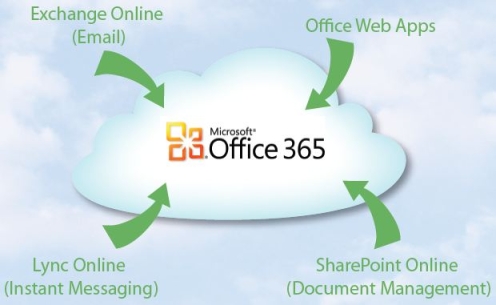 More and more these days we nonprofits face the choice between continuing to maintain email on premises or to migrate to the cloud, especially when their in-house servers start to age. Microsoft’s Office 365 and Google Apps are the two main contenders for moving to the cloud.
More and more these days we nonprofits face the choice between continuing to maintain email on premises or to migrate to the cloud, especially when their in-house servers start to age. Microsoft’s Office 365 and Google Apps are the two main contenders for moving to the cloud.
Microsoft started its journey to the cloud four years ago with BPOS (Business Productivity Online Suite) and in 2011 transitioned to a more robust solution, Office 365. Microsoft’s maturity on enterprise software and long term experience with collaboration software has made its cloud offering a very appealing product for both large and small organizations. Microsoft has definitely taken advantage of its most popular communication products and latest Office offering packing them into cloud services that deliver everything a user needs.
Although there are many areas where Office 365 excels, the main areas that differentiate it from its competition Google Apps are: accessibility, adaptability between cloud-based and hybrid coexistence, and scalability.
Anytime, Anywhere, Any Device
Being connected anytime anywhere with Office 365 is easier and smoother, especially if you are a user like me, who is used to all of user-friendly functionality offered by Microsoft products. I find that the advantages of working anywhere at anytime with Office 365 are far richer than GoogleApps.
Users are often most productive when using familiar Microsoft software, including Outlook, Word, Excel and Powerpoint. Office 365 integrates seamlessly with the computers in the office allowing users to work remotely as if they were in the office.
Another advantage is that Office 365 works the same across browsers, and devices, including like PC, Mac, iPhones, Androids, Blackberries.
Hybrid Approach: On-Premise & In the Cloud
While GoogleApps functions mainly in the cloud, Microsoft Office 365 offers not only a cloud-based solution, but also a hybrid solution that allows for a system on site. Both co-exist and function as a single-integrated architecture.
Office 365 federated services provides you with an easy to implement single sign-on solution as well as a rich online control panel to administer your cloud accounts and services.
Scalability: From One to Many Users
Microsoft offers three main plans: Exchange online only, Small Business Plans or P Plans, and Enterprise Plans or E Plans. These plans are often customizable and you can add stand alone features as needed. One thing to note is that upgrades between P or E plans are not possible. In order to upgrade from a P to an E plan you will need to engage in a full migration, so we cannot emphasize enough how important good planning is when it comes to cloud migrations.
Pricing ranges from $4 to $22 per user per month; the most basic plan includes just Exchange Online (with 25GB of storage per user, antivirus, anti spam filtering and active directory integration) while the most full featured offering includes SharePoint, Lync, and a subscription license to Office Professional Plus 2010 for up to 5 devices per user.
It should be noted that the Small Business or P plan is limited to 50 users. Also it does not include 24×7 support or provide for directory services synchronization. The Enterprise or E plan allows you to have more users, and does include 24X7 support and directory services synchronization.
Final Thoughts
Both Google and Microsoft are good cloud solutions that can work well depending on your organization’s situation and needs. Google can be a particularly good solution for small organizations if cost is the driving factor since Google offers its service at no cost to qualified nonprofits.
However, often Office 365 is a more compelling cloud choice as it is much easier to migrate users to a platform that is familiar to them. Organizations should compare the short-term and long-term benefits and costs of using Office 365 compared to having an onsite server. Office 365 can reduce hardware costs and maintenance overhead, improve ease of migrations, provide data protection and reduce the risk an on-premise server.
We can help your organization evaluate the costs and benefits of Office 365, and see if it’s the right solution for you. Please feel free to email me at jcolindres[at]citidc.com.
More questions about the cloud?
Community IT has explored both SharePoint and OneDrive on our blog in the posts on OneDrive vs SharePoint , SharePoint as File Server, and OneDrive vs Dropbox.
You may also be interested in free Webinar resources we have presented on Sharepoint, OneDrive, and Dropbox. See our catalog of past webinars here.
Resources
>> Learn more about Office 365
>> Videos about Office 365
